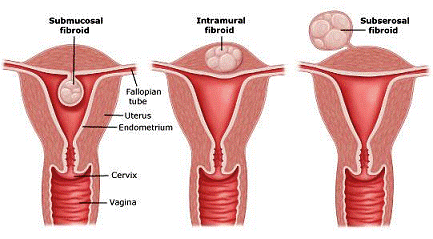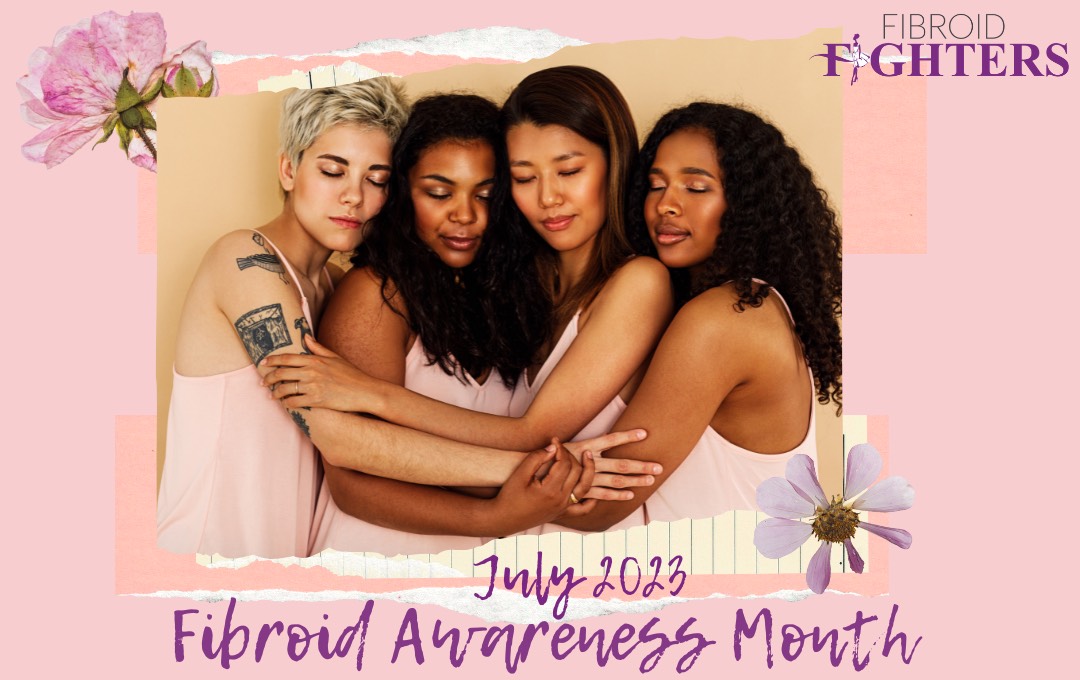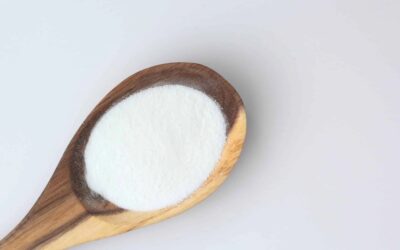Its Fibroid awareness month July 2023
So at The Fertility Shop, we thought we would publish some relevant posts
Information from the British Fibroid Trust www.britishfibroidtrust.org.uk
What are Fibroids?
Fibroids are benign (non-cancerous) tumours. They grow on or in the muscle layer of the uterus
(womb). The medical name for fibroids is uterine leiomyomas. Doctors usually describe the size of
a uterus enlarged by fibroids in the same way they talk about the size of a pregnant uterus. So when
a fibroid stretches the uterus to a 12- to 14-week size, the uterus is about the same size it would be if
you were 12 to 14 weeks pregnant. This refers to a fibroid about the size of a small melon, or to several smaller fibroids. Your doctor can usually feel fibroids that are large enough to cause
symptoms when doing a routine pelvic exam. It is also possible that your doctor will discover a
fibroid (or fibroids) when you have no symptoms at all.
How many types are there?
Fibroids can grow in different areas of the womb. Gynaecologists classify them according to their
locations into 3 different types:
| Submucosal | Intramural | Subserosal |
| Under the lining of the womb, can grow on stalk | Within the wall of the womb, most common type, may distort the uterine cavity, or cause | On the outer wall of the uterus and usually causes no symptoms until it grows large enough to cause interference to adjacent |

Fibroids may grow as a single tumour (growth) or in a cluster. A single fibroid can be size of a pea
or quite large as a melon. A bunch or cluster of fibroids can also vary in size.
What are the risk factors?
There are no confirmed risk factors, however, it is known that:
- Fibroids are common in women of child bearing age (between 25 to 45 years of age).
- They are 2 – 3 times more common in Afro-Caribbean origin women and tend to be larger and more numerous.
- Higher risk in over weighed or obese women.
- Women who have given birth appear to be at lower risk.
What are the causes?
Little is known about the causes uterine fibroids. There are a number of theories, but none of these ideas gives a complete explanation. Most likely, fibroids are the product of many factors, which could be genetic, hormonal, environmental, or a combination of all three. After menopause, fibroids tend to shrink but may not disappear.
What are the symptoms?
Many women don’t have any symptoms and therefore you probably don’t even know you have
fibroids. However, some women who have uterine fibroids may experience the following
symptoms:
- Prolonged and heavy bleeding or painful periods
- Bleeding between periods.
- Anaemia
- Feeling “full” in the lower part of your belly.
- Frequent passing of urine.
- Lower back pain.
- Constipation.
- Haemorrhoids.
- Painful sex.
- Infertility.
- Miscarriages.
- Premature labour during pregnancy.
Heavy menstrual bleeding
This is most common symptom. You may experience any of the followings:
- Flooding: a sudden gush of blood.
- Prolonged periods: much longer duration than you had in the past, e.g. 10 days compared to
4/5 days previously. - Large blood clots, probably size of 50p coin or more.
These symptoms can be distressing, make you feel very tired and restrict your daily activities. You
could be changing you tampons/pads every hours and find it difficult to go to work.
Anaemia
Heavy monthly bleeding can lead to iron deficiency which may you feel very weak, tired and dizzy.
It may be so severe to warrant at least iron level correction while waiting for a decision on the
treatment of the fibroids. Refer to the section “How to Cope” in our website for ideas on how to
improve your blood irons level.
Pain
Large blood clots or multiple fibroids cause severe pain & cramps. Large fibroids press on the
lumbar and sacral nerve trunks to cause chronic pelvic pain.
Pressure-related on adjacent organs
Large fibroids exert pressure on the nerve and blood vessels which can result in a dull ache in the
thighs and varicose veins.
Pressure from large subserous fibroid can cause the followings:
- Increase in frequency to pass urine.
- Leaking and dribbling of urine
- Urgent need to pass urine but only small amount comes
- In severe cases, difficulty or inability to pass urine which requires a catheter.
- Occasionally, cystitis: caused by trapped urine which later becomes infected.
- Constipation & haemorrhoids: caused by pressure on the rectum.
Pain during sex
This happens when the fibroids press on the cervix or they hang through the cervix into the vagina.
Bleeding may also occur.
What are the complications of fibroids?
You can experience one or more of the following complications
| Fertility | Large fibroids affect fertility by: • Impairing the lining of the womb. • Compressing or obstructing the fallopian tubes. • Distorting the shape of the womb cavity. • Preventing sperm movement from reaching the womb |
| Pregnancy | Multiple fibroids, particularly those in the lower part of the womb, can block the vagina during pregnancy and therefore a caesarean may be necessary for delivery. Risk of miscarriages is increased with the presence of multiple fibroids. Pain & premature labour can happen when fibroids degenerate (die) during pregnancy. |
| Urinary Tract Infection | Pressure exerts by the fibroids on the bladder can lead to urinary tract infection and on the urethra can result in urinary obstruction and kidney dysfunction. |
| Fibroid growth in other organs | Fibroid rarely breaks away from the womb and when it does, you can get: •. BML (Benign Metastasizing Leiomyoma) in the lungs. •. Disseminated Peritoneal Leiomyomatosis in the abdominal wall. Neither condition is cancerous. |
| Cancer | Only very rare that fibroid develops into cancer but there is 0.2% risk of malignant transformation (i.e. becoming cancerous). |






0 Comments